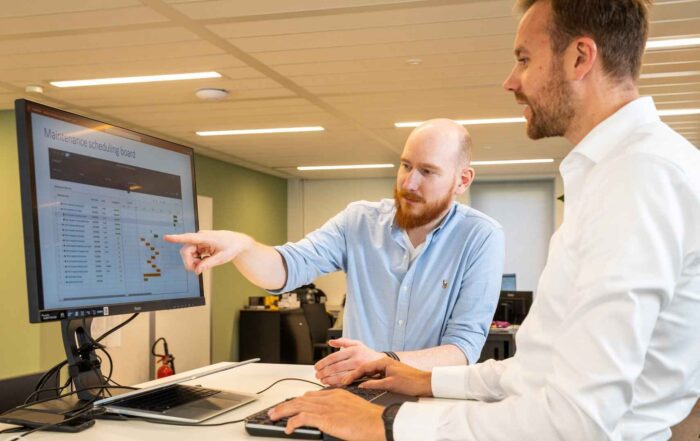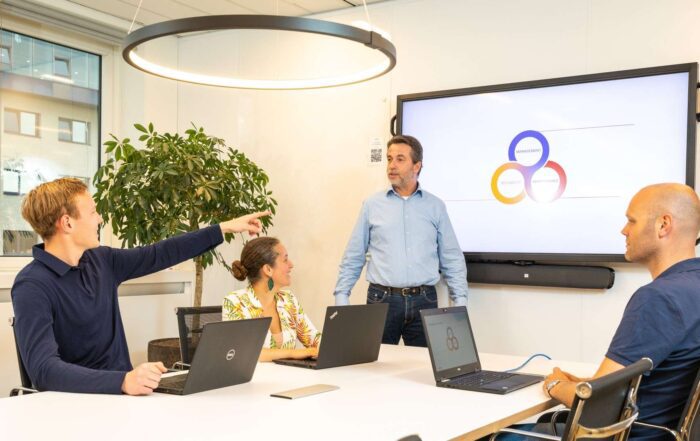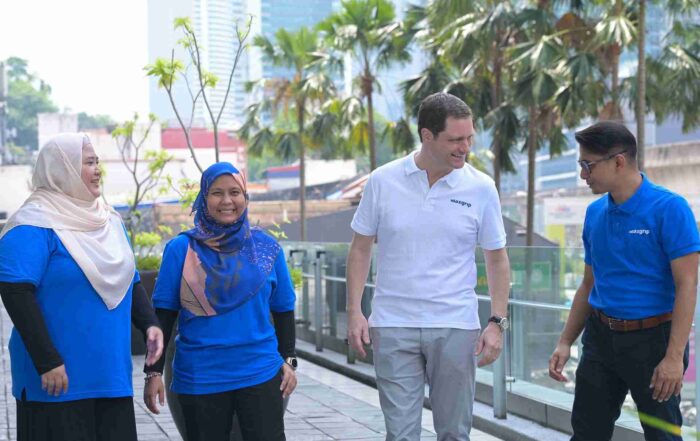Plant directors, Maintenance and Operations Managers in FMCG manufacturing face many challenges such as the need to maximize productivity in dynamic market conditions, manage product shifts, tightening budgets, speeding up Digital Transformation while maintaining (tight) margins. The ability to adapt continuously and rapidly is essential to dealing with these business issues and deliver a sustainable business performance. One of the ways in which such companies realize transformation is through change programs.
How a global market leader realizes change
A global market leader, active in both business-to-business and business-to-consumer achieves over 15 billion euros of annual sales, operates globally and has been producing industrial and consumer goods for over a century. The global maintenance manager recognized the opportunity to accelerate improvement of the asset management organization through implementing an asset performance change program. He shares seven best practices to implement a successful change program.
Best Practice 1: Formulate the ‘why’
“Why should you transform your operations? Success starts with determining the goal and added value for your business. With that in mind, it is important to get all involved management stakeholders (on corporate and site level) on board. HQ staff, plant managers, maintenance and operations managers but also IT managers and other relevant people in the organization need to be convinced of the necessity of the change program, see and agree that it will improve bottom-line results and then be able to sell it internally to their teams. Additionally, they need to be able to explain what is in it for them, for their role and their responsibilities. How will it make their jobs better? How will they add more value to the organization’s goals on a departmental and company level?”
MaxGrip’s view: The FMCG manufacturer devoted a lot of time to get everyone updated on and involved in the asset management excellence program. They also engaged with MaxGrip to help in deploying the program and demonstrate qualified and quantified improvements. The change program was not set up to simply reduce cost of maintenance; It was focused on how (better) asset management will bring lasting improvements to every layer of the organization.
Best Practice 2: Find the balance between flexibility and standardization
“We needed an adaptable asset management program that would lift maintenance globally to the next level while respecting a production site’s autonomy and addressing their specific challenges. In fact, sites are not forced to take part; if they want to participate in the program then they can make their interest known. Implementing a change program while dealing with day-to-day production and with limited resources is challenging to say the least. Achieving lasting results will require extra effort and an open mind to possible changes and site management therefore must be intrinsically motivated. To secure the commitment from site management even more, they are given ownership over the transformation program. Corporate leaders are involved but only to coach, support and share learnings from other locations. Additionally, MaxGrip provides support with their practical asset management expertise on the first pilot sites.”
MaxGrip’s view: The approach of an adaptable program that was chosen by this company further encourages adoption at plant-level. If the program is owned by the plant and embraced integrally then this increases the chance of achieving sustainable change.
Best Practice 3: Self assessments by the sites
“To know what you want to improve you need to know first where you are. The sites self-assessments are at the heart of the asset performance change program. All relevant aspects related to people, processes, systems, data and company culture are included. The program is based on fourteen, interrelated chapters or asset management competences. The criteria to score the outcome have been aligned with the company’s business targets. The outcomes are reviewed and validated with the site leadership team, prior to sharing the results with corporate management.”
MaxGrip’s view: The site self-assessments were developed, applied and verified with the help of MaxGrip. Having the sites carry out their own assessments empowers people to take ownership and be part of the change. This company sees that this way of working helps with generating buy-in at all levels and right from the start.
Best practice 4: Trigger a change without confrontation
“Many improvement programs tend to result in reducing maintenance cost (and headcount). Significant effort is put in communicating that the self-assessments and the associated improvement proposals emphasize the importance of investing in better asset management at all levels. The outcome of the self-assessments have to inspire the site workforce. They will recognize that the program is not a threat but instead offers recommendations and the opportunity to grow. This is reflected in the result of the self-assessments: a site improvement roadmap.”
MaxGrip’s view: The site self-assessments have been carefully built to create an asset performance improvement roadmap. The set up of the self-assessments help both site management and shop-floor staff to see that this is not an audit or examination in which all mistakes or bad performers are reported. On the contrary, the questions stimulate the respondents to come forward with recommendations for improvements. The roadmaps for the first sites included aspects such as simplifying and embedding the maintenance execution workflow, starting defect elimination using Root Cause Analyses, training staff, improve reporting and analysis for OEE and creating associated business cases.
Best Practice 5: Empower people
“The greatest result of this project is the cultural change. You get to be able to bring people to a next level of knowledge and expertise together. The internal adoption and understanding why the asset improvement program is being offered, is high. One of things we focus on is to utilize the potential in people; are the roles and responsibilities a good match with the people doing them. To give an example: I am very proud of one of our technicians who was singled out as a high-potential employee and key contact for one of the sites. This young man was given the chance to grow and develop into a reliability engineer, has played a key role in the execution of the improvement roadmap and he has now become the site maintenance manager.”
MaxGrip’s view: People are the key to successful change in asset performance management. The attention to people, their talents and how they add value to their role, the site and the company also encourage a positive culture of innovation and development.
Best Practice 6: Trigger a change without confrontation
“While we did not enforce the program, we did promote it internally throughout the organization. We explained its objectives, use, first findings, learnings and we put first successes in the spotlight. Putting effort into communication during a change program is important, whether it is at site level or globally within the organization. Good work and successes need to be celebrated; learnings need to be shared; no one has to reinvent the wheel and leading by examples is very essential in our organization.”
MaxGrip’s view: Communication can and should also include 1-on-1 level, meaning coaching. When people go through changes, it helps to reflect on the importance of these changes for their role and responsibilities.
Best Practice 7: Justify with quantified results
“Every site can go forward at their own pace. The logical next step is implementing the improvements as suggested in the roadmap. This is done at a smaller scope first, to get used to the changes and adjust them where needed. When satisfied with the approach and results, the site can deploy and roll out the improvements to the entire site. No matter the fact that most people will recognize the recommendations for improvement, it is essential for the first projects to prove a viable business case, even at pilot level. We therefore focus primarily on improvement of the line performance, typically measured through OEE. Next to that, it is also important to keep a close watch on employee satisfaction and buy-in at shop-floor level to be able to sustain the program.”
MaxGrip’s view: It is sometimes useful to engage external support to help and make the change. They can assure that the project keeps going, measure and report on progress and successes with underpinning quantified and qualified KPIs. This is essential to be able to keep justifying and deploying a change program like this.
📊 Download free eBook on improving asset performance
📰 Continue Reading
- Solution: Boost asset performance
- Whitepaper: Drive performance with asset management
- Asset Improvement Mapping identifies €5.5mm savings for pharmaceutical plant
- Tailor-made master class asset management helps Arla to achieve sustainable asset performance
- Reliability Metrics 101: Mean Downtime
- Reliability Metrics 101: Mean Time Between Failures
- FMEA vs RCFA
Get inspired
Unlock the full potential of your EAM system by transitioning from implementation to deployment, fostering operational excellence and strategic success.
More and more, we see companies acknowledge the crucial role that people play in getting successes by implementing Industry 4.0 solutions.
The number one hurdle to make digital transformation successful? According to 62% of business leaders it is organizational culture (as reported by MIT Sloan and Capgemini). This widespread challenge drives home the message that your company culture needs to be a key element in your industry 4.0 change strategy.




